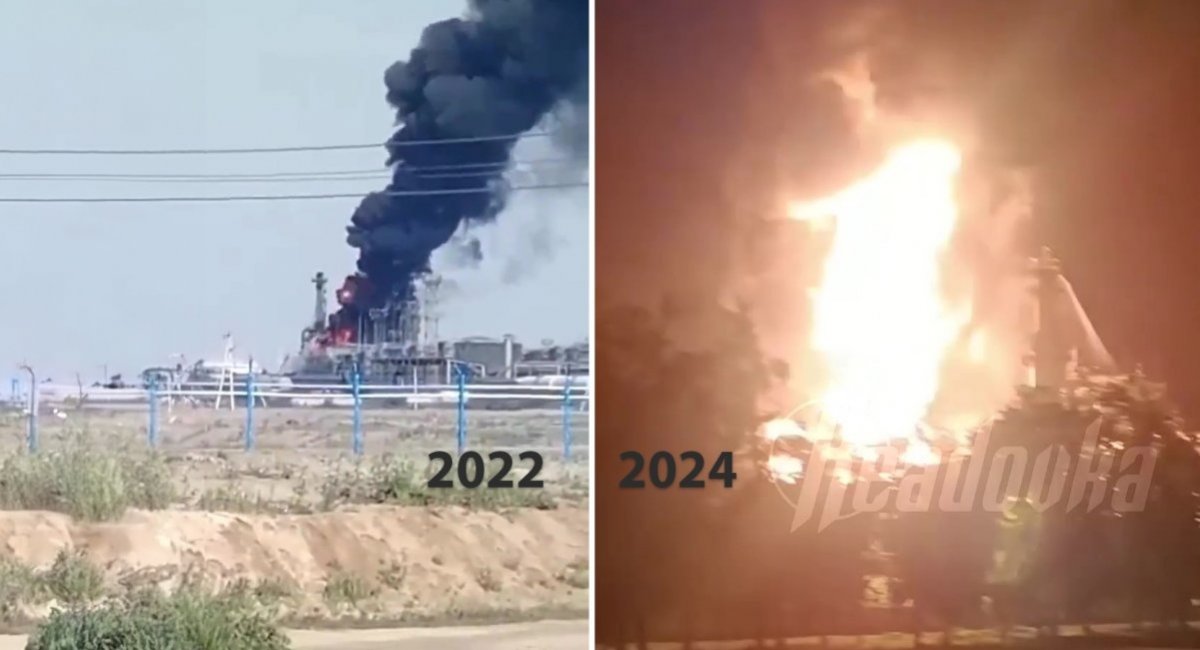Another oil processing plant was hit in the russian federation, by a drone attack launched by the Ukrainian Defense Forces overnight June 6th, 2024. This is the second time this oil refinery has come under attack, the last one being almost exactly two years ago, on June 22, 2022.
That event had become symbolic for both sides in this war since it was the very first time a Ukrainian unmanned aerial vehicle loaded with explosives, managed to reach and hit a russian oil plant. At that time, Ukraine had no long-range kamikaze drones of its own, so it used Chinese civilian-use Mugin-5 PRO drones as a delivery vehicle.
Read more: Ukrainian Drone Precisely Destroys Another Rare russian Electronic Warfare System Near Border (Video)
On that night two years ago, russian workers at oil refineries were happily filming the drone fly towards them as they thought that it was theirs, a russian drone. That is, until the explosion erupted at the refinery. You can see that in the archive videos above.
Now, it's 2024, and systematic attacks by Ukrainian long-range drones on oil facilities in russia have become commonplace. The range of reach has increased significantly, too: for now, it spans at least 1,400 kilometers, all the way to Bashkiria and beyond, while the russians anticipate Ukrainian strikes to get as far as 2,500 km into their territory.
The effectiveness of such strikes has evolved, too. For illustration, the result of today's attack on the same Novoshakhtinsk refinery looks like this:
According to russian media, several hits led to damage inflicted to two AVT-type primary oil processing units. In other words, that makes 100% destruction of all capacities carrying out the first stage of the oil refining process because this plant has only two such units, each processing 2.5 million tons of oil yearly.
In terms of design capacity, the Novoshakhtinsk refinery sits in the middle of two other facilities repeatedly struck in the past: less capable than the similar plant in Ilsky (6.6 million tons/year) but superior to the Slavyansk-ECO in Slavyansk-on-Kuban (4 million tons/year).
Lastly, we should note that the only way attacks on refineries can be effective is when they are methodical, since one way or another russians will eventually repair and put them back to work to keep the oil and cash flowing. Some of the previously affected oil refineries in russia have already entered their second cycle of repairs after a repeated Ukrainian strike. For example, the successful attack on the oil refinery in Tuapse, Krasnodar Krai, on May 17th, 2024 took place only 10 days after the authorities announced it would resume its operation after the attack on January 25th. And now it is under repair again.
Read more: Ukraine Hit Targets in Novorossiysk, Tuapse, Where it Appears That Air Defense Equipment is Completely Absent














